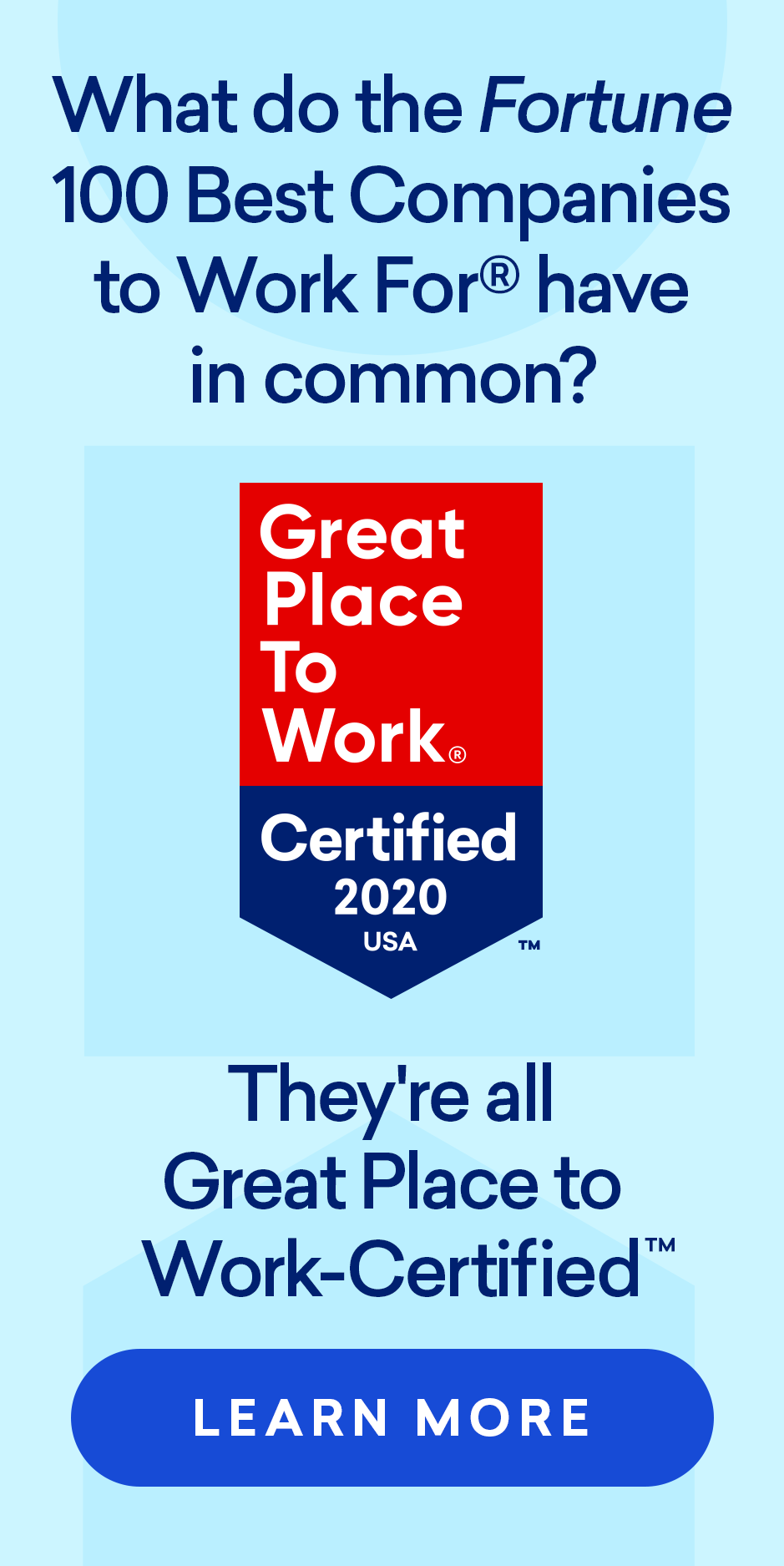
The 30 Best Workplaces to Retire From have lower turnover and a more committed, collaborative workforce
Roughly a third of U.S. households over 55 have no retirement savings. Among those that do, the median nest egg for people 55 to 64 is $104,000--enough to buy an annuity paying $310 per month. That's scary news for working Americans heading toward their golden years. But it's a golden opportunity for businesses.
Indeed, some companies are doing right by workers eyeing retirement and gaining competitive advantages along the way. We have compiled a list of them: the 30 Best Workplaces to Retire From. This new ranking by our consulting firm, Great Place to Work Institute, and Fortune highlights companies that provide generous retirement programs, equitable pay and even-handed treatment of employees, regardless of age. These workplaces, in turn, enjoy lower turnover, as well as a more committed, collaborative workforce.
As Great Place to Work Consulting Partner Jason Slusher notes, real problems arise when you lose team members early as they approach the end of their careers. Companies can face substantial hurdles to succession planning when their ranks of highly experienced employees diminish. "They truly are the experts at what they do," he says, and retaining senior employees becomes essential to passing on that institutional knowledge to the next generation of leaders.
A "Silver Tsunami" is well underway, according to the Society for Human Resource Management. The cohort of workers 45 to 64 is growing faster than any other generation, and the economy is already grappling with two retirements for every new entrant in the workforce. The U.S. could face a skilled labor shortage of 20 million employees over the next two decades, giving business leaders all the more reason to think beyond modest 401(k) plans and retirement seminars.
The Best Workplaces to Retire From distinguish themselves with organizational cultures that employees see as collegial and fair. For example, more than 95 percent of people over the age of 52 at the Best Workplaces describe their companies as friendly. "They've established those relationships, their network," Slusher says. "So they're obviously proud to be there, and they've been there a long time."
Compared to peer companies certified by Great Place to Work, older team members at the winning companies were more likely to say promotions are handled equitably and managers involve people in decisions that affect their jobs. Winning workplaces were also more likely to direct career opportunities inward, with an internal promotion rate of 35 percent. In other words, these corporate cultures demonstrate deep respect for the knowledge and experience of veteran employees.
Leading organizations also offer competitive benefits to hold on to experienced team members. Twelve of the 30 Best Workplaces—40 percent—offer a defined-benefit pension. By comparison, just 18 percent of private employers surveyed by the Labor Department offer defined-benefit pensions. Additionally, all of the winners offer a 401(k) plan, and more than half match employee contributions dollar-for-dollar. What's more, these organizations take practical measures to ease the transition out of the workforce, such as phased retirement programs, financial planning services and post-employment health benefits.
The investments come with a return: The Best Workplaces to Retire From report turnover that averages 7.2 percent, about a fifth lower than their peers considered for the list. The winners also score high marks on survey questions related to employee loyalty, with more than nine in 10 team members over 52 saying they're proud of what they accomplish and that they want to stay with their employers for a long time. In addition, employees overall at The Best Workplaces to Retire From are 10 percent more likely to report they can count on peers to cooperate—an important feature of high-performing, innovative organizations.
It's a performance-review cliche to ask, "Where do you see yourself in five years?" But rarely do companies bother asking what their people will be doing two decades from now. Given the country's sparse retirement savings, demographic trends and the growing importance of knowledge transfer, maybe they should.











